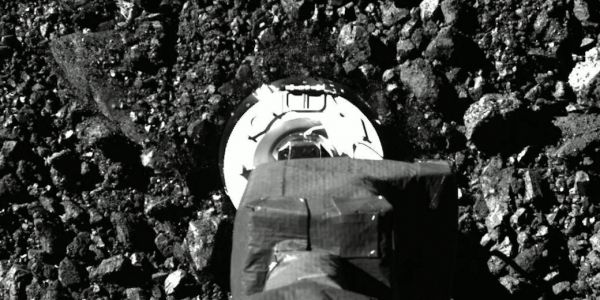Colloquium: OSIRIS-REx and Near-Earth Asteroid Bennu - Returning a Sample of the Early Solar System
NASA’s OSIRIS-REx spacecraft rendezvoused with asteroid (101955) Bennu early in December 2018. After performing comprehensive global observations of Bennu, the mission selected several candidate sample collection sites, which were winnowed down to a final two (a primary and a back-up). Of the key compounds, phyllosilicates, carbonates, silicates, oxides, and hydrocarbons were detected and mapped across the surface. On October 20, 2020, the spacecraft collected regolith from the asteroid surface. The sampling event and its aftermath provided a wealth of knowledge about the surface and the soon-to-be-returned sample.
Images of sample collection show that spacecraft interaction mobilized rocks, liberated fine dust from the subsurface, and created a debris plume. Thermal emission spectroscopy of particulates that landed on instrument optics reveal absorptions attributed to Mg-OH bonds in phyllosilicates and the iron oxide magnetite. The spectra are consistent with those of the most aqueously altered carbonaceous chondrites (type 1 or 2).
The spacecraft returned to Bennu in April 2021 to conduct a final flyby and observe how the surface changed in response to the sampling event. The freshly exposed surface has a lower normal albedo and is spectrally redder than the original surface. In addition, a spectral band attributed to magnetite is more pronounced. These spectral properties represent the starting point for surface changes that arise from space weathering on Bennu, confirming predictions from color-ratio mapping. The sampling event formed an elliptical crater ~9 m long. Crater scaling relationships indicate that formation of such a large crater requires a bulk density substantially lower than that of the whole asteroid. Momentum build-up measured during robotic arm motions constrains the total mass of sample stowed to 250 ± 101 g. The spacecraft departed Bennu on 10 May 2021 for its inbound cruise back to Earth. The sample delivery date is 24 September 2023, when Bennu’s orbit crosses Earth’s.
Image credit: OSIRIS-REx, University of Arizona, NASA, Goddard Scientific Visualization Studio

